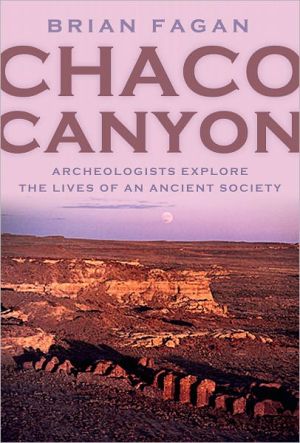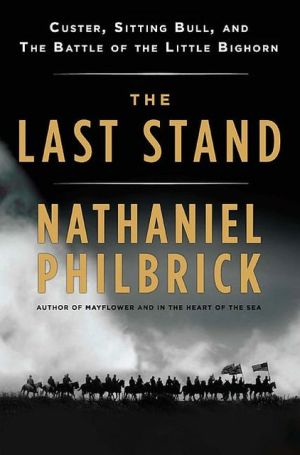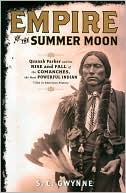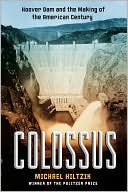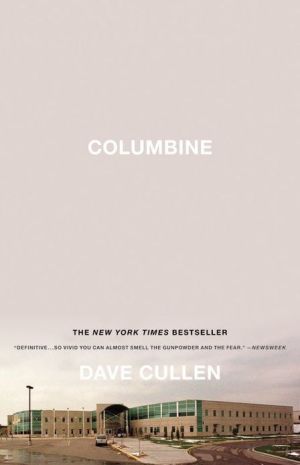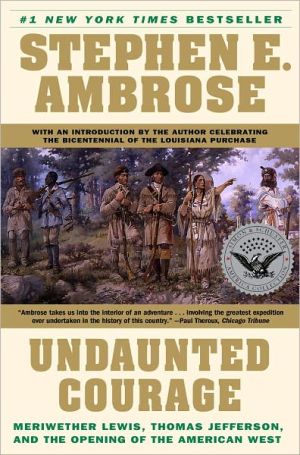Chaco Canyon
Chaco Canyon, New Mexico, has been called the Stonehenge of North America. Its spectacular pueblos, or great houses, are world famous and have attracted the attention of archaeologists for more than a century.\ Beautifully illustrated with color and black-and-white photographs, Chaco Canyon draws on the very latest research on Chaco and its environs to tell the remarkable story of the people of the canyon, from foraging bands and humble farmers to the elaborate society that flourished...
Search in google:
Chaco Canyon, New Mexico, has been called the Stonehenge of North America. Its spectacular pueblos, or great houses, are world famous and have attracted the attention of archaeologists for more than a century. Beautifully illustrated with color and black-and-white photographs, Chaco Canyon draws on the very latest research on Chaco and its environs to tell the remarkable story of the people of the canyon, from foraging bands and humble farmers to the elaborate society that flourished between the tenth and twelfth centuries A.D. Brian Fagan is a master story teller, and he weaves the latest discoveries into a compelling narrative of people living in a harsh, unpredictable environment. Indeed, this is not a story about artifacts and dusty digs, but a riveting narrative of people in the distant past, going about their daily business, living and dying, loving, raising children, living in plenty and in hunger, pondering the cosmos, and facing the unpredictable challenges of the environment. Drawing on rare access to the records of the Chaco Synthesis Project, Fagan reveals a society where agriculture and religion went hand-in-hand, where the ritual power of Chaco's leaders drew pilgrims from distant communities bearing gifts. He describes the lavish burials in the heart of Pueblo Bonito, which offer clues about the identity of Chaco's shadowy leaders. And he explores the enduring mystery of Chaco's sudden decline in the face of savage drought and shows how its legacy survives into modern times. Here then is the first authoritative account of the Chaco people written for a general audience, lending a fascinating human face to one of America's most famous archaeological sites. Library Journal In a book addressing general readers, Fagan (anthropology, emeritus, Univ. of California, Santa Barbara; The Little Ice Age: How Climate Made History, 1300-1850) aims to tell the story of New Mexico's famed Chaco Canyon as a "historical narrative based on archaeological research." He does so by drawing on the work of dozens of archaeologists associated with the Chaco Synthesis Project, which has collected material on the canyon for over 100 years. In addition, he publishes, for the first time, the Chaco photography of George A. Grant, National Park Service photographer during the 1920s and 1930s. Fagan's evocative prose gives readers a sense of the environment of the San Juan Basin and Chaco today, from the remains of great houses such as Pueblo Bonito, to the small settlements, which he stresses need more investigation. Readers obtain a feeling for Chaco life from its earliest habitation by nomadic foragers 11,000 years ago through the flourishing of the Ancestral Pueblos (the designation now used instead of Anastazi) and their subsequent move away in the face of drought. Fagan underlines the adaptability of these people as they migrate when faced with insurmountable factors in their harsh environment. Re-creating the history and ethos of the site through archaeological evidence, new technologies, and the research at his disposal, he affirms that Chaco's social, political, and spiritual worlds revolved around agriculture and religion while deftly pointing out the mysteries and controversies that still remain. Fagan draws together a massive amount of material into a graceful, thoughtful work, well documented with annotated references. For history, travel, and archaeology collections in public and academic libraries.-Joan W. Gartland, Detroit P.L. Copyright 2005 Reed Business Information.
\ Library JournalIn a book addressing general readers, Fagan (anthropology, emeritus, Univ. of California, Santa Barbara; The Little Ice Age: How Climate Made History, 1300-1850) aims to tell the story of New Mexico's famed Chaco Canyon as a "historical narrative based on archaeological research." He does so by drawing on the work of dozens of archaeologists associated with the Chaco Synthesis Project, which has collected material on the canyon for over 100 years. In addition, he publishes, for the first time, the Chaco photography of George A. Grant, National Park Service photographer during the 1920s and 1930s. Fagan's evocative prose gives readers a sense of the environment of the San Juan Basin and Chaco today, from the remains of great houses such as Pueblo Bonito, to the small settlements, which he stresses need more investigation. Readers obtain a feeling for Chaco life from its earliest habitation by nomadic foragers 11,000 years ago through the flourishing of the Ancestral Pueblos (the designation now used instead of Anastazi) and their subsequent move away in the face of drought. Fagan underlines the adaptability of these people as they migrate when faced with insurmountable factors in their harsh environment. Re-creating the history and ethos of the site through archaeological evidence, new technologies, and the research at his disposal, he affirms that Chaco's social, political, and spiritual worlds revolved around agriculture and religion while deftly pointing out the mysteries and controversies that still remain. Fagan draws together a massive amount of material into a graceful, thoughtful work, well documented with annotated references. For history, travel, and archaeology collections in public and academic libraries.-Joan W. Gartland, Detroit P.L. Copyright 2005 Reed Business Information.\ \
